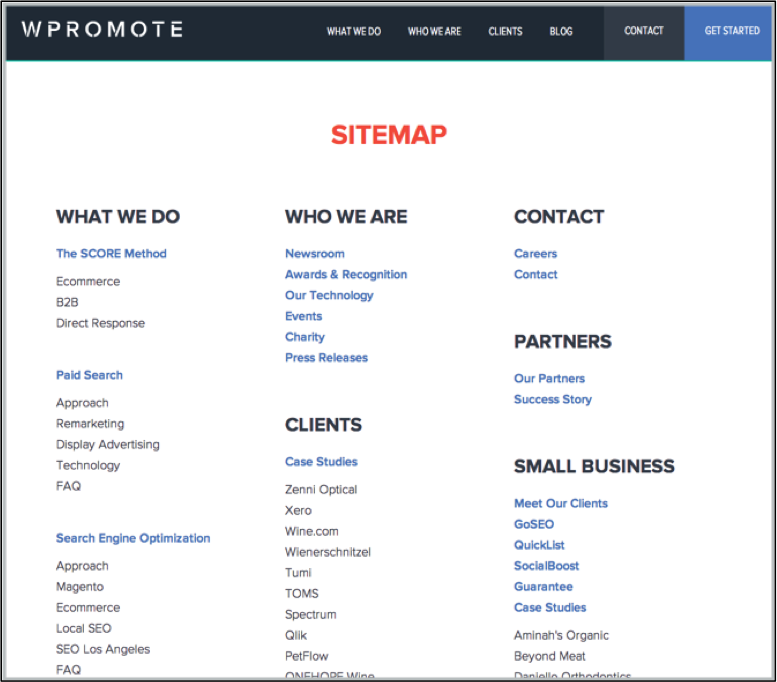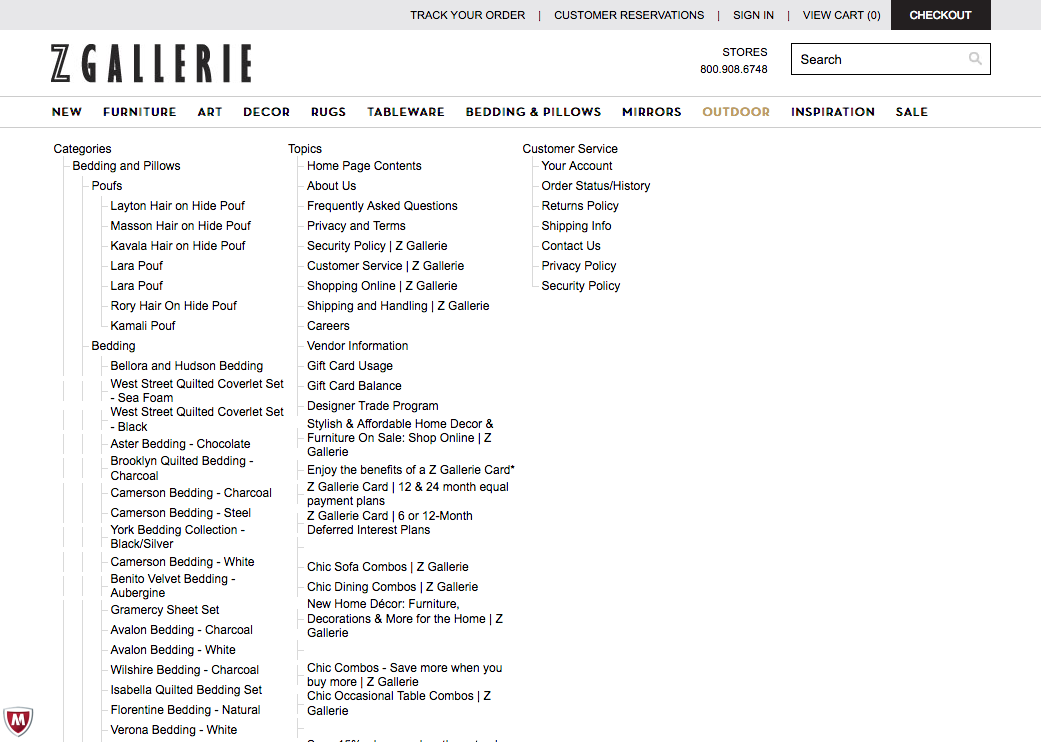When it comes to your website, there are two types of maps you’ll need – an HTML sitemap and an XML sitemap. In this blog we will discuss the HTML sitemap. At a glance, an HTML sitemap offers good usability (serving as a handy tool for site visitors) and can help with your search results.
What Is An HTML Sitemap?
An HTML sitemap is an area of your site that displays a text outline of all the pages available on your site. It clearly provides an overview of your website’s content and allows users an easy way to navigate it. Each bit of anchor text (page title) in the HTML sitemap links to the page it is representing.

Your HTML sitemap’s layout should always match the site’s informational hierarchy. The information must be presented in a way that naturally communicates which pages are most important and divides sections based on correlation. There are different ways to format an HTML sitemap—chronologically, alphabetically, main menu adherent, etc. But however you decide to format your HTML sitemap, be sure that you make it easy for users to understand and utilize it. Also, bear in mind that if you have tons of pages, you’ll want your HTML sitemap to be styled so it doesn’t look overwhelmed or cluttered.
Sitemaps can usually be located at the bottom of websites in the form of clickable links. For example:


Users & Search Engines
HTML sitemaps have been considered an SEO best practice for a long time because they are beneficial to both users and search engines.
The User
In terms of the user, the HTML sitemap allows visitors to easily navigate your site. Often, users will call upon the HTML sitemap if they are unable to find the topic they are searching for through the site’s main menus. For new visitors to your site, people who have less inherent site searching ability, or those unfamiliar with the types of services, products, or content your site features, an HTML sitemap can help users find where they want to go.
Additionally, an HTML sitemap – which lets you highlight and emphasize categories – tells users what pages on your site are most important. This is an effective way to communicate your site’s areas of prominence.
The Search Engine
HTML sitemaps aren’t just for users. Though not as impactful for Google’s crawlers as XML sitemaps, HTML sitemaps are a great way to show page rank on your site. Furthermore, clicking through your site to see if you can reach every page is one of the best ways to test how crawlable your site is. And by having links to all your pages in one place (the HTML sitemap), you’ve really made it easy for you to test this out and make sure you can get to every page.
For extra SEO, look at your HTML sitemap for opportunities where you could have more keyword-friendly links (page and/or tab titles).

Also, HTML sitemaps can serve as an archive for Google and other search engine crawlers to check out your site’s past content. For example, if you have a blog on your site, maybe consider having a form of HTML sitemap implemented on the sidebar, which holds links to all your posts going back to the beginning. Having this type of HTML sitemap allows users and search engines to go back in time and see these posts.
Map Like A Master
HTML sitemaps can make a difference in your search results, but most importantly, they make your site visitors’ lives easier. These maps clearly illustrate your site’s hierarchy and allow for simple navigation to a user’s desired goal. It is highly recommended that every site utilize proper sitemaps. HTML sitemaps are the first half of this coin; XML sitemaps are the other. Read the next Girl vs. Internet blog to learn about XML sitemaps and understand their value to your site.







Responses